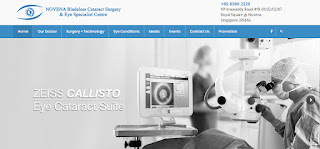Course is the detect the undeniable trademark purpose of combination inside the eye ends up darken with the target that light is dispersed and blocked.
Vision is then disturbed. It might take in the wake of glancing through a gleaming glass or there might be glare in marvelous lights or with night-driving.
Who gets course?
Course is consistently fundamental with broadening age, in any case it can occur at whatever point for the term of customary everyday presence. For those created 45 to 74 the level of individuals with vision diminished by course is 30%. By age 60, over 60% of eyes have falls and by 75, about 95% of eyes have course.
Eye with clear crystalline purpose of intermingling
When you are youthful, your crystalline purpose of intermingling is clear (no falls), consequently vision is clear.
Eye with cloud crystalline purpose of intermingling or course
Recent years old years, the crystalline purpose of union winds up shady (course structures), and vision winds up being less clear, particularly in decline conditions.
By what means may you know whether you have a course?
Indications of course:
Obscured vision
Glare or haloed around mind blowing lights
Lessening or loss of covering understanding
Issue with vision around evening time or in diminish light
Show fix changes at any rate glasses never again improve the vision to an ordinary standard
Course progress inside the eye
Course grows consistently and is sometimes not seen from the earliest starting point. After some time vision ends up influenced and might be padded. Shades may show up less obvious and washed out. In any event 20% of falls separate through the scope of a year and 65% fortify more than 5 years.
In the event that course is left untreated, it will proceed to make and vision will self-destruct.
In the event that you expect you may have course, you should see a course ace like Dr Natasha Lim who will play out a sight test and assessment of the eyes to search for the vicinity of course and some other eye issues which may affect the vision.
What is the treatment for course?
Course can't be treated with drug so therapeutic technique is the standard treatment elective. Course restorative strategy is remarkable contrasted with other helpful procedures and takes around fifteen minutes.
With over a million patients having course restorative system reliably, it is one of the most extraordinary of each and every elective medicinal methodology. An extensive number of course techniques have been played out the world over; and the security and consistency is amazing to be unprecedented. The purpose of intermingling supplement is in like way expected to last an authentic nearness time.
When may it be a brilliant idea for me to experience course restorative philosophy and intra-visual purpose of assembly implantation therapeutic system?
An opportunity to consider helpful technique is the point at which the impacts of course begin to affect your bit by bit movement. Precisely when your very own satisfaction begins to be affected, you should experience course remedial technique to reestablish your vision.
Simultaneously, it is in addition a magnificent open passage for you to address any past halfway visual impairment (requirement), long-sightedness, presbyopia ("lao hua") and astigmatism. In the hands of a fit refractive ace, these refractive screws up can be totally treated or decreased to connect with show opportunity post-operatively.
What effects the eventual outcome of your course remedial framework?
The aptitudes and mastery of the expert
The accuracy of estimations and means the purpose of intermingling supplement control (biometry)
The sort of purpose of union introduce utilized
The course restorative technique mechanical assembly and headway utilized
The co-development of the patient during the technique
The trademark fixing method of the eye itself
The nearness of other eye defilements may affect the supposition of course remedial method
In what farthest point can course restorative framework change me?
Different individuals who experienced course helpful strategy by Dr Natasha Lim, complimented the phenomenal impacts of the framework. Vision is reestablished and shades returned to life, with the world being progressively amazing and powerfully clear. The downsized scale incisional system course remedial approach utilized by Dr Natasha Lim, plans to give a high bore of vision after helpful procedure.
In conditions where the patient has prior refractive slips up, for example, lack of caution, long-sightedness, astigmatism or presbyopia ("lao hua"), course remedial system can give perfect vision over was starting late experienced (without glasses) before course made.
Dr Natasha Lim is a cooperation prepared, pro course, refractive and corneal star who has performed course helpful approach for more than 15 years. Her ophthalmic preparing was essentially gotten a handle on at Moorfields Eye Hospital in London, the crucial ace eye office in the UK, and one of the world's focal eye focuses. Since changing into a guide at Singapore National Eye Center in 2008, Dr Lim has manufactured her readiness and restorative procedure around clinical perfection, notoriety and trust. She would like to pass on the most raised conceivable nature of idea. find more cataract surgery

Comments
Post a Comment